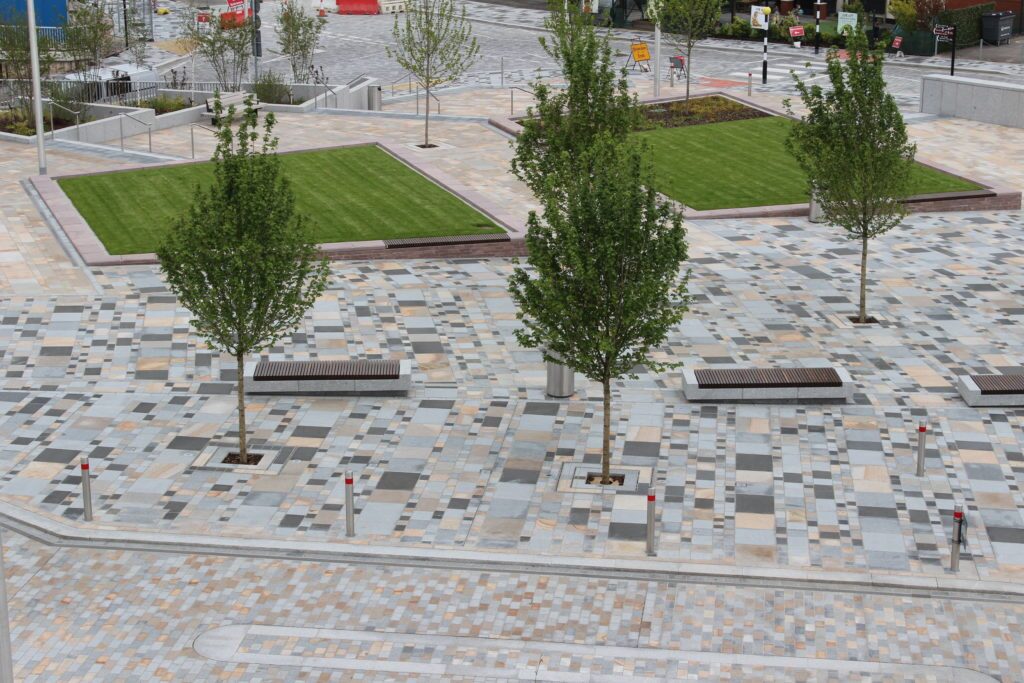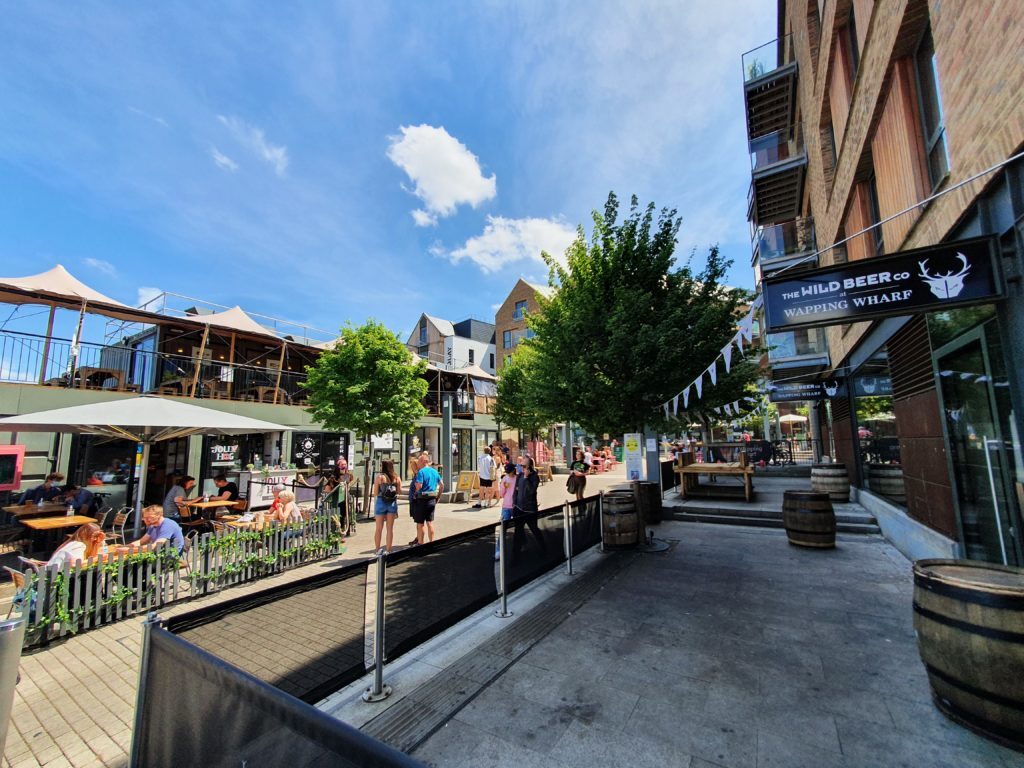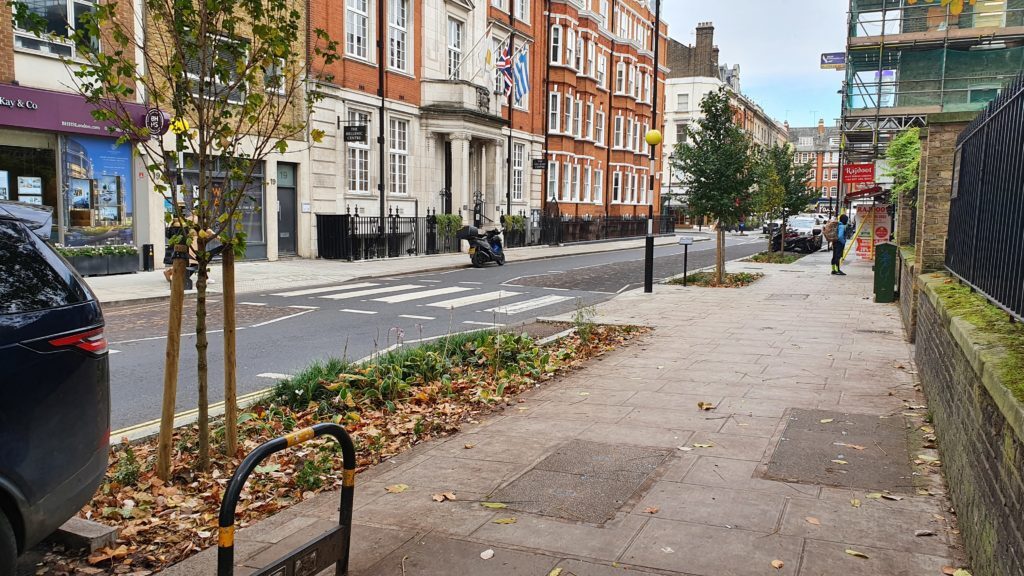Our urban environments are a complicated mixture of hard and soft finishes: concrete and grass, bricks and shrubs, tarmac, and trees. All require certain skills in design, and certain levels of maintenance. But as our climate changes, we need to revise our traditional designs to create more resilient future-proofed spaces.
But what defines the correct proportions? How much green to every acre of grey? Is there a “right” equation? And is there a “right” way of doing it?
In London, approximately 80% of public space is streets – for many people, that is too great a proportion. But if we greened those streets up, then would people feel different about them? Is it possible to re-purpose zones to make our cities healthier? It has been shown that just two hours a week of contact with natural environments, such as parks and green spaces, can reduce the risk of poor health by 45%.

There has been a lot of research done on the best way to achieve hard paving to minimise the cost of installation and minimise the cost of maintenance. The paving industry continues to develop new and innovative methods of creating hard-wearing and attractive surfaces. But the landscape industry can be seen as stuck in the past with outdated practices, not far removed from the ways that landscaping was done fifty years ago, even though GreenBlue Urban has been innovating and championing better practices for over 30 years.
One of the challenges involved in getting green into urban locations is that landscaping has historically been the last to be designed, and the last to be installed. Too often isolated pockets of green are what is “leftover” and therefore any landscaping is fragmented and does not achieve the “critical mass” that makes a significant difference. This is even though it has been shown that a one-hectare increase in greenspace within 300m of your residence is associated with an 8% increase in life satisfaction, 7% increase in worth and 5% in happiness.

A genuinely balanced design must mean that all disciplines must be given some sort of parity in the design hierarchy. Understanding “co-design” where all stakeholders participate with their opinions, and these opinions are all viewed as having equal weight and value is a great way of getting integrated outcomes. The understanding of how individuals will use space, as well as the costs of creating that space means that the human element is given consideration, without designing spaces that are impossible to build or are very expensive to maintain.
Pocket parks have been very successful in recent years; using small vacant areas to create an oasis of green tranquillity in heavily engineered environments has shown how these elements can enhance a street scene. But can we do better? Whilst financial pressure is a reality for many local authorities, it has been noted that for every £1 invested in the London Borough of Camden’s green spaces, the Council reports a return of £11.58! Few investments are as rewarding as this.
GreenBlue Urban operates as the interface between nature and the built environment. Understanding the necessary division of space for all needs leads to a better urban street scene for all. Integrating successful tree planting with the ArborSystem tree planting solutions, managing stormwater at the source with the ArborFlow and HydroPlanter SuDS features and greening every plane with Verdecade green wall climbing support products can lead to attractive places and spaces. Getting basic principles and parameters into early design frameworks means that the result will be an equitable space for all.

No matter how big or small new plots are, developers must now demonstrate a measurable increase in the biodiversity fostered on all sites, as enforced by the 2021 Environment act and to be made compulsory this year. Also, 600,000 properties are facing a future risk of flooding we all welcome news from Defra to go ahead with the implementation of Schedule 3 of the Floods & Water Management Act 2010, supporting new developments and the inclusion of SuDS.
As more and more information becomes available about the value of green infrastructure, and the huge eco-system benefits that accrue from our canopy cover, we are empowered to get a better balance in our urban space than we now have. The ubiquitous motor vehicle and its domination of our urban space are being challenged, and people-focused walkable cities are emerging. These schemes are usually landscape led, with the needs of the user put first, and are fully supported by GreenBlue Urban, as we design healthy spaces in harmony with nature. Speak to one of our technical team today to get some fresh thinking on urban design and how to incorporate thriving trees into your scheme!


